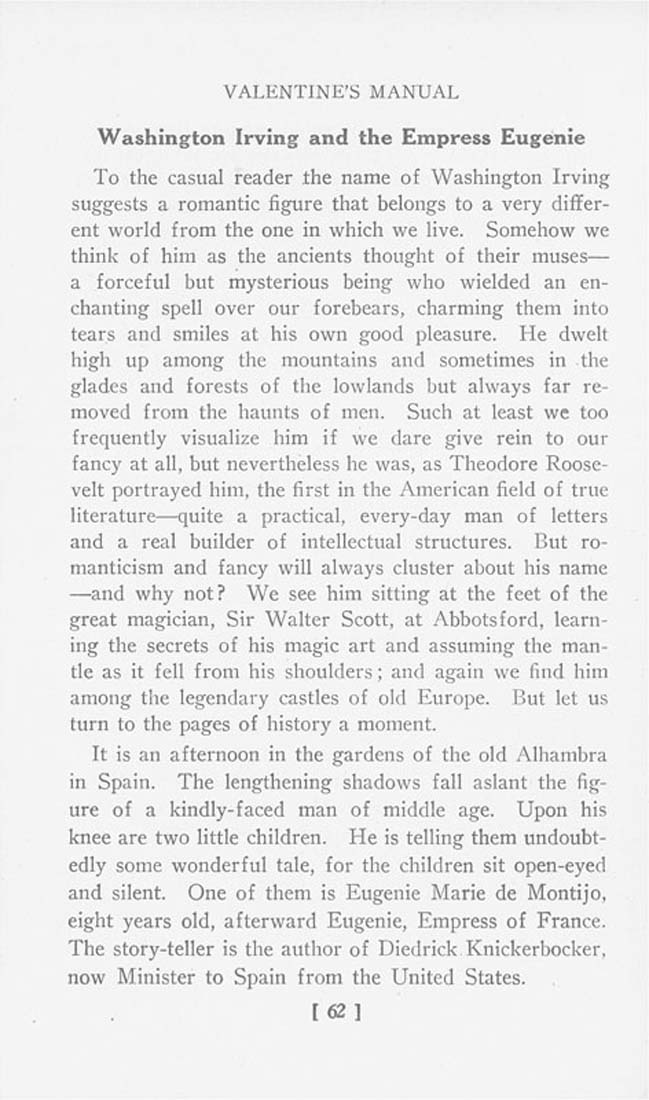VALENTINE'S MANUAL
Washington Irving and the Empress Eugenie
To the casual reader the name of Washington Irving
suggests a romantic figure that belongs to a very differ¬
ent world from the one in which we live. Somehow we
think of him as the ancients thought of their muses—
a forceful but mysterious being who wielded an en¬
chanting spell over our forebears, charming them into
tears and smiles at his own good pleasure. He dwelt
high up among the mountains and sometimes in the
glades and forests of the lowlands but always far re¬
moved from the haunts of men. Such at least we too
frequently visualize him if we dare give rein to our
fancy at all, but nevertheless he was, as Theodore Roose¬
velt portrayed him, the first in the American field of true
literature—quite a practical, every-day man of letters
and a real builder of intellectual structures. But ro¬
manticism and fancy will always cluster about his name
—and why not? We see him sitting at the feet of the
great magician, Sir Walter Scott, at Abbots ford, learn¬
ing the secrets of his magic art and assuming the man¬
tle as it fell from his shoulders; and again we find, him
among the legendary castles of old Europe. But let us
turn to the pages of history a moment.
It is an afternoon in the gardens of the old Alhambra
in Spain. The lengthening shadows fall aslant the fig¬
ure of a kindly-faced man of middle age. Upon his
knee are two little children. He is telling them undoubt¬
edly some wonderful tale, for the children sit open-eyed
and silent. One of them is Eugenie Marie de Montijo,
eight years old, afterward Eugenie, Empress of France.
The story-teller is the author of Diedrick Knickerbocker,
now Minister to Spain from the United States.
[62]
|








